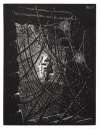Tsuguharu
Foujita
French-Japanese artist Tsuguharu Foujita garnered critical acclaim with his delicate blend of Eastern and Western aesthetics, captivating 1920s Paris with his figurative style. If you’re looking for original Tsuguharu Foujita prints and editions for sale or would like to sell, request a complimentary valuation and explore our network’s most in-demand pieces.
Tsuguharu Foujita art for sale
Discover Tsuguharu Foujita prints for sale, exclusively available through our private network of collectors. Explore signed and unsigned screenprints, lithographs, digital prints, and rare editioned proof prints by era-defining blue chip artists.
Sell Your Art
with Us
with Us
Join Our Network of Collectors. Buy, Sell and Track Demand
Biography
Tsuguharu Foujita remains one of the most influential figures of the Parisian avant-garde scene of the early 20th century. Best known for his delicately nuanced paintings that blend traditional Japanese ink techniques with European modernism, Foujita's unique synthesis of styles garnered him international acclaim.
Born in Tokyo in 1886 to an upper-class family with a military background, Foujita was the youngest of six children. His father, a general in the Imperial Japanese Army, and his mother, who hailed from an aristocratic family, provided an environment that nurtured his early interest in art. Foujita's formal education began at the Tokyo National University of Fine Arts and Music, where he immersed himself in both Eastern and Western art traditions, graduating in 1910.
Beckoned by the vibrant Parisian art scene, in 1913 Foujita arrived in the city that would become his spiritual and artistic home. He quickly integrated himself into the bohemian circles of Montparnasse, befriending fellow artists including Amedeo Modigliani, Chaïm Soutine, and Fernand Léger. His distinctive style, characterised by the use of milky white backgrounds and fine, precise lines, began to emerge during this period, leading to his first solo exhibition in 1917, which was met with critical success.
Beyond his paintings, Foujita was also a printmaker, illustrator, photographer, and filmmaker. His versatility and eccentric personality, marked by his often flamboyant fashion sense, contributed to his legendary status. Produced in 1929, his intaglio print Chat Qui Se Tord exemplifies his delicate approach to printmaking, capturing the elegance and playfulness of a cat with the same fine lines found in his paintings. This print reflects his fascination with detail.
Significant exhibitions, including the 1921 Salon d'Automne, solidified Foujita's reputation as a leading figure in Modern Art. Despite his successful career, Foujita's personal life was marked by a perpetual search for identity and belonging, leading him to travel extensively and even convert to Catholicism later in life, adopting the name Léonard.
In 1931, Foujita embarked on a world tour that significantly influenced his life and art. The end of the Roaring Twenties not only saw the end of his third marriage to Lucie Badoul ('Youki') but also the onset of the Great Depression. To avoid taxes from the French government, Foujita fled Paris with his new lover, Madeleine Lequeux. The pair, often referred to as the 'Flight of Fou Fou,' traveled to various countries including Brazil, Argentina, Bolivia, Peru, Colombia, Panama, Cuba, Mexico, and the United States. Their journey was marked by celebrity-like receptions, including press conferences, successful exhibitions, and widespread media coverage.
Throughout this journey, Foujita's work evolved, taking on a more dramatic air inspired by cinema, with exaggerated poses and intimate moments captured in his compositions. Madeleine, with her striking features, became a prominent subject in his work during this period. One of the most notable works from this era is Nu Allongé, which showcases Foujita’s use of fine, precise lines to create a serene, dreamlike quality.
The legacy of Foujita is one of cultural bridging and artistic innovation. His work continues to inspire a dialogue between the East and the West, a testament to the enduring value of his cross-cultural identity.































